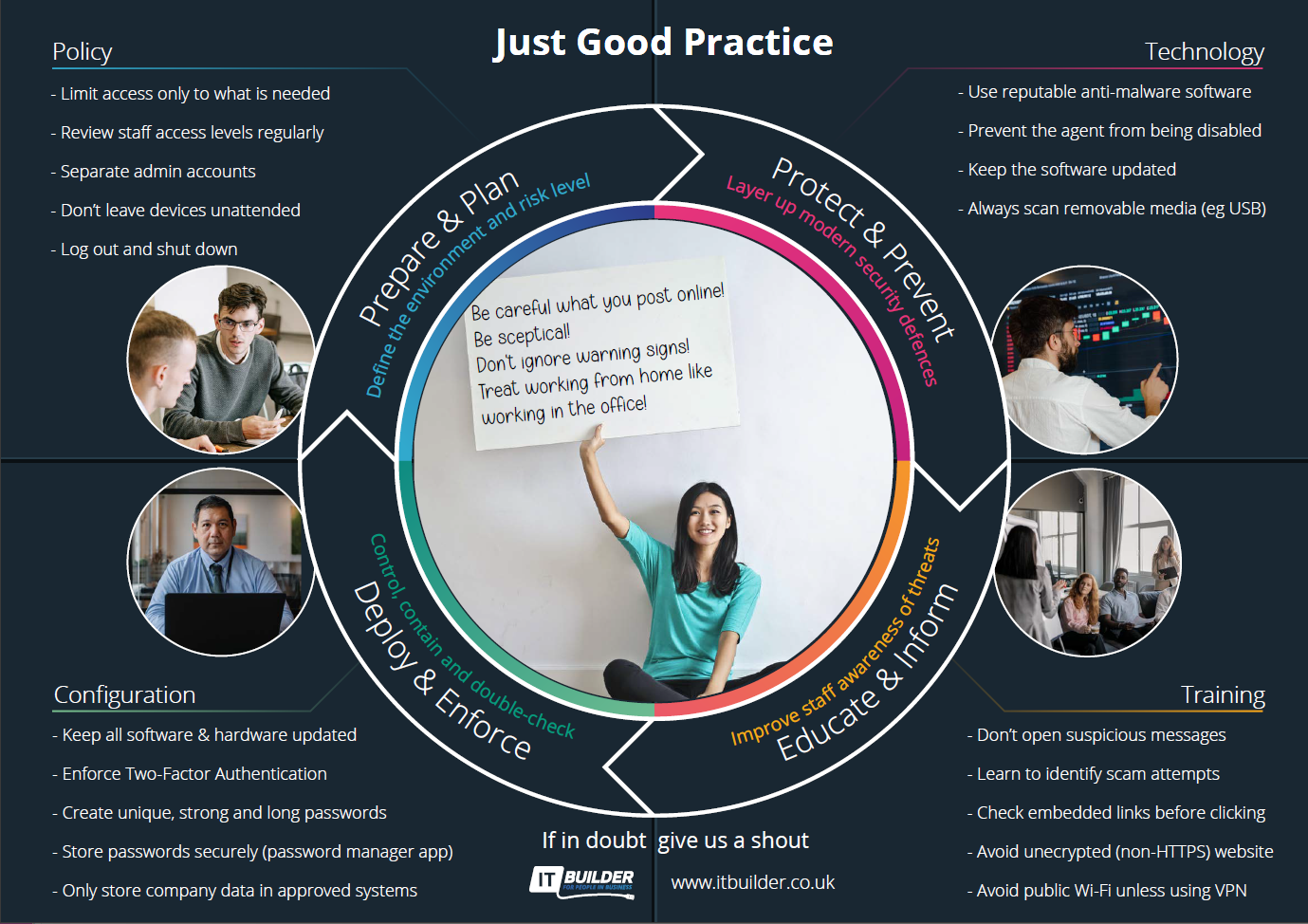We frequently get asked for tips and pointers on how to improve security practices in a business and ways of sharing that information among staff. Knowledge is power, after all, and when it comes to cyber security, awareness can make the difference between business continuity and costly downtime.
Cyber threats are not just an issue for large enterprises. According to the UK Government’s Cyber Security Breaches Survey 2024, almost six in ten medium-sized businesses and seven in ten large organisations experienced at least one cyber incident in the past year. This clearly shows that no business is too small or too niche to be targeted. Cyber criminals frequently see smaller organisations as “softer targets” with fewer resources dedicated to security.
While phishing remains the most common attack vector, more advanced methods such as ransomware, credential theft, and supply chain compromises are becoming increasingly prevalent. For example, ransomware-as-a-service (RaaS) kits have lowered the barrier to entry for cyber criminals, making these attacks more widespread and damaging.
The Cost of a Breach
The financial and reputational impact of a cyber attack can be severe. IBM’s Cost of a Data Breach Report 2023 revealed that the average cost of a data breach in the UK now exceeds £3.4 million. This figure includes not only direct costs like investigation, remediation, and fines, but also hidden costs such as customer churn, lost contracts, and reputational harm.
For smaller businesses, even a single breach could threaten survival. Research by Hiscox shows that one in five small businesses that suffer a major cyber incident are forced to cease operations within six months. Proactive investment in awareness and prevention is far cheaper than dealing with the aftermath of a breach.
Posters as Everyday Training Aids
While formal training and security awareness programmes are essential, simple visual reminders can play a surprisingly powerful role. Posters, desk cards, and infographics act as everyday nudges that keep security top of mind for employees.
Research from the SANS Institute suggests that repeated exposure to security reminders can cut risky behaviour by up to 30%. For example, an employee who sees a poster about phishing emails by the coffee machine might think twice before clicking on a suspicious link.
These visual cues are especially effective in hybrid or remote workplaces, where digital posters and infographics can be shared via intranet, email newsletters, or collaboration tools like Teams and Slack.
Turning Awareness into Action
Ultimately, employees are the first line of defence against cyber threats. Encouraging staff to adopt a few simple but powerful habits can dramatically reduce risk.
Create strong, unique passwords – A password manager makes it easier to keep track and avoid repetition. Weak or reused passwords remain one of the most exploited vulnerabilities in business IT systems.
Enable multi-factor authentication (MFA) – According to Microsoft, MFA can prevent over 99% of automated account takeover attempts, making it one of the most effective defences against credential theft.
Keep devices and software updated – Cyber attackers often exploit known vulnerabilities. Regular updates and patching close these doors before they can be exploited.
Think before you click – With more than 90% of breaches beginning with a phishing attempt, email vigilance is critical. Employees should be trained to spot red flags like urgent language, unexpected attachments, or spoofed sender addresses.
Building a Culture of Security
The goal of awareness training and reminders is not to create paranoia, but to build a culture of security where safe practices become second nature. Businesses that succeed in embedding this culture often see benefits beyond security: improved compliance, better use of IT systems, and greater trust from clients and partners.
Leadership also plays a key role. When senior managers champion good cyber hygiene — for example, by openly using MFA, reporting phishing attempts, or discussing the importance of updates — employees are far more likely to follow suit.
By combining engaging awareness materials like posters with practical, actionable steps, businesses can move from reactive firefighting to proactive defence. In today’s threat landscape, that shift can make all the difference.

Download Here
Print Quality Poster
Email Flyer
Let us know in the comments below if you found it useful.








